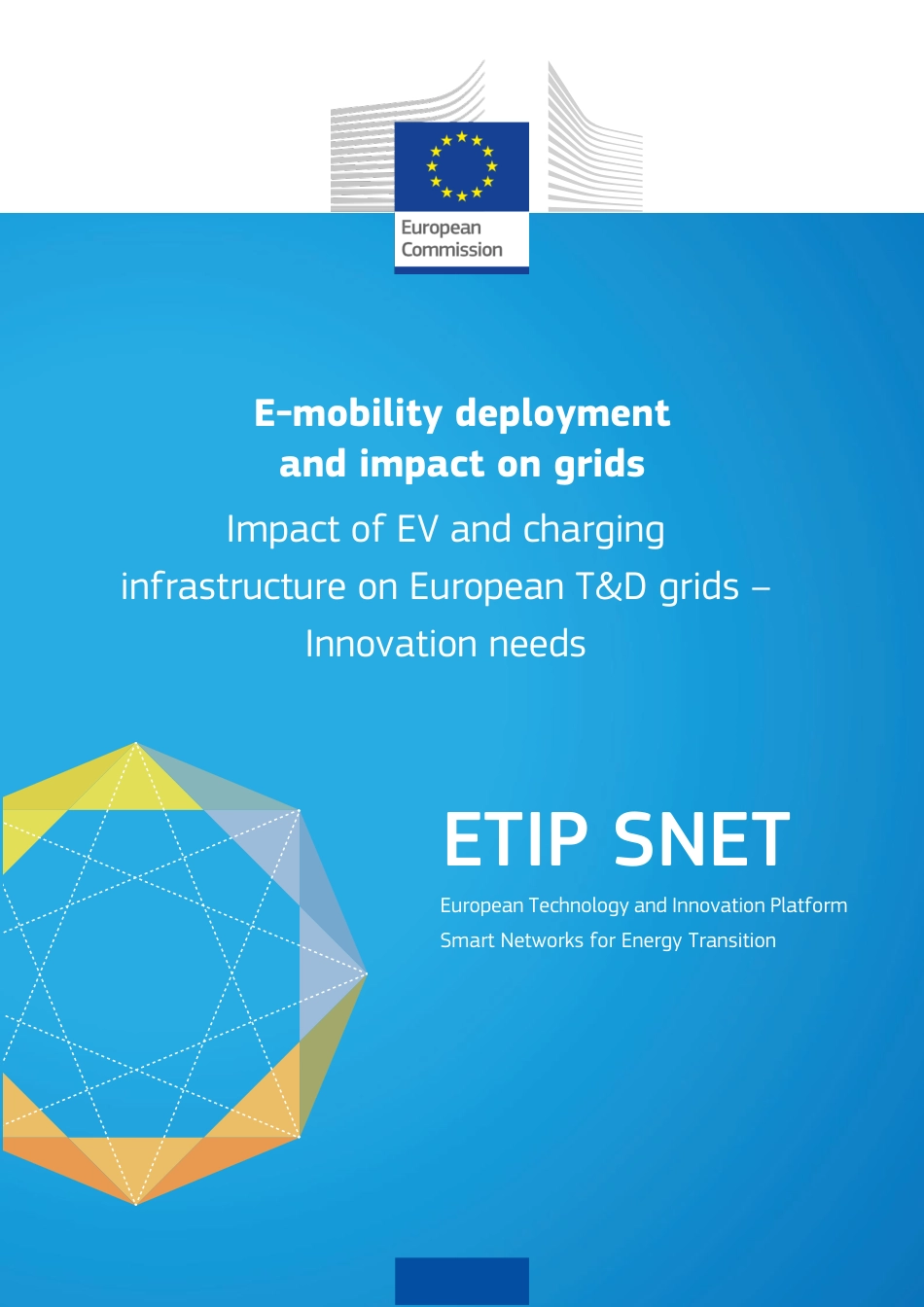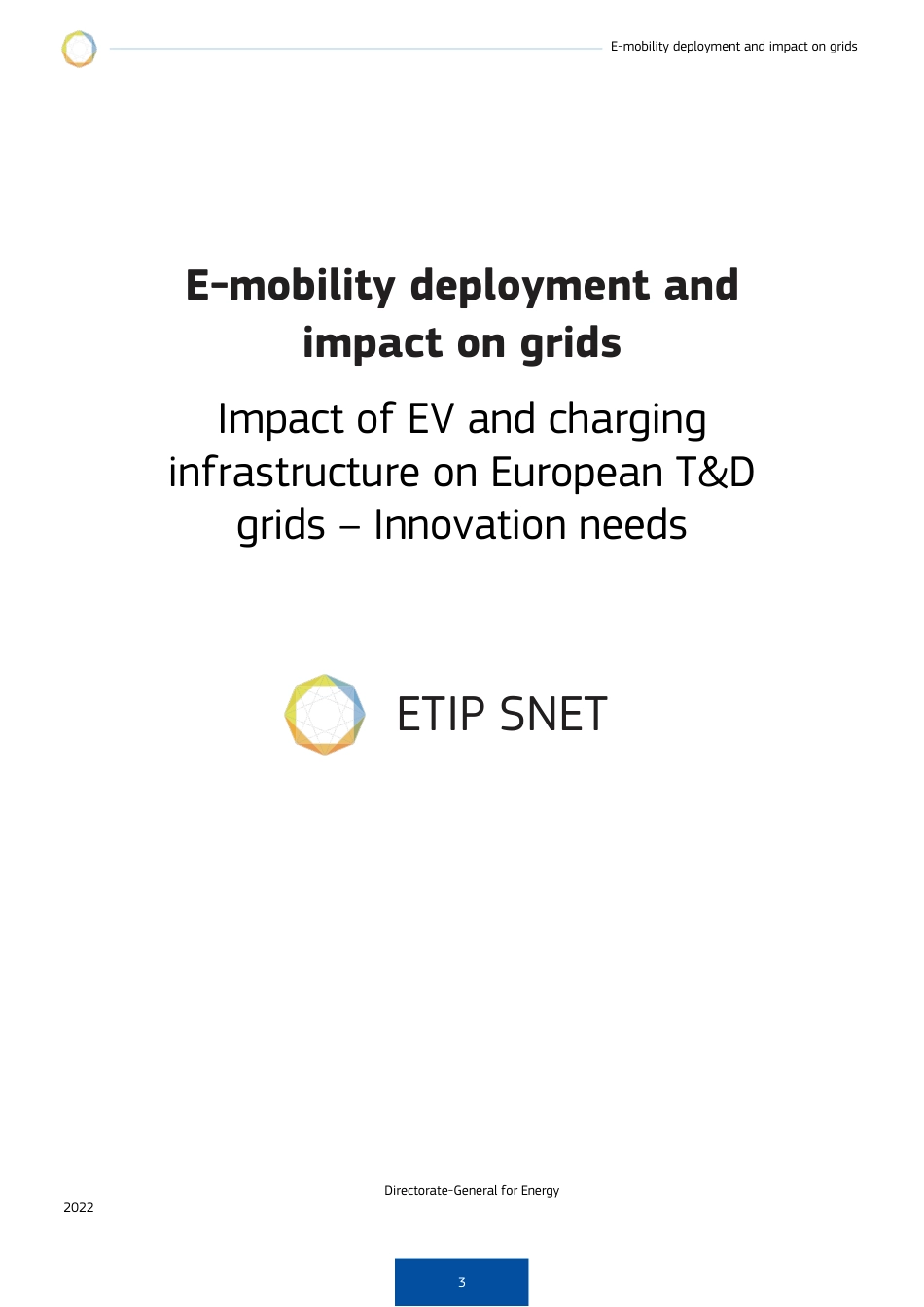E-mobility deployment and impact on grids Impact of EV and charging infrastructure on European T&D grids – Innovation needs ETIP SNET European Technology and Innovation Platform Smart Networks for Energy Transition E-mobility deployment and impact on grids 2 Authors: This report is the result of collaborative work in form of a Task force within ETIP SNET WG1, led by Sanitago Gallego Amores. Editors: Santiago Gallego Amores. Contributing authors: Guillermo Amann, Víctor Bermúdez, Elena Boscov Kovacs, Santiago Gallego, Spyros Giannelos, Antonio Iliceto, Albana Ilo, Julián Romero Chavarro, Natalie Samovich, Laurent Schmitt, Nuno Souza e Silva, Goran Strbac, Zelijko Tomsic, Emre Zengin. Acknowledgements The authors would like to thank Daniela Gaddari for WG1 support, Maria Laura Trifiletti for coordination support with WGs, and Edoardo Genova for the editing support. EUROPEAN COMMISSION Directorate-General for Energy Directorate B – Just Transition, Consumers, Energy Efficiency and Innovation Unit B5 – Innovation, Research, Digitalisation, Competitiveness Contact: Mugurel-George Păunescu E-mail: mugurel-george.paunescu@ec.europa.eu European Commission B-1049 Brussels E-mobility deployment and impact on grids 3 E-mobility deployment and impact on grids Impact of EV and charging infrastructure on European T&D grids – Innovation needs ETIP SNET Directorate-General for Energy 2022 E-mobility deployment and impact on grids 4 LEGAL NOTICE This document has been prepared for the European Commission however it reflects the views only of the authors, and the European Commission is not liable for any consequence stemming from the reuse of this publication. More information on the European Union is available on the Internet (http...



